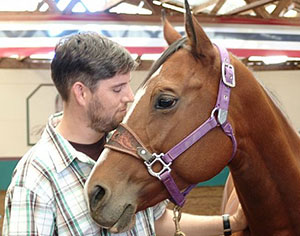Saving Your Pet With CPR
Share This Everywhere!
 Get More Pet Tips
Get More Pet Tips
Content provided Pet Talk with Dr. B is meant for educational purposes on health care and medical issues that may affect pets and should never be used to replace professional veterinary care from a licensed veterinarian. This site and its services do not constitute the practice of any veterinary medical health care advice, diagnosis or treatment.
Saving Your Pet With CPR
Emergency techniques such as CPR may help pet owners keep their pets alive until they arrive at their veterinarian or emergency center. Here are some tips on CPR for pets:
Check for breathing and pulse. Using your middle and index fingers, check below the pet’s wrist, inner thigh at the femoral artery, or below the ankle where the left elbow meets the chest.
If there is no breathing and no pulse, administer CPR immediately.
Look for other warning signs. Check the gums for color. They should be reddish or pinkish. If they are gray or pale colored, this may be a warning sign. Check the pupils. If they are dilated or unresponsive to light, this may be another warning sign.
If the pet is not breathing, give breaths. With cats and small dogs, place your mouth over its nose and mouth and blow air in. With medium to large dogs, place your mouth over its nose to blow air in.
If breath will not go in, check for blocked airway. Turn pet upside down, with its back against your chest, and wrap your arms around them and clasp your hands together just below their ribcage in the abdomen area. Using both arms, thrust the abdomen sharply five times. Check the mouth or airway for any foreign objects, and remove them. Follow this with two additional rescue breaths.
If pet has no pulse, begin chest compressions. Place animal on its right side and place your hands over its ribs where the elbow meets the chest. Begin giving compressions. Do not give compressions if the pet has a pulse.
Procedure for CPR:
Cats/ Small dogs: compress chest ½ to 1 inch, alternating 5 compressions with each breath of air
Medium to large dogs: compress chest 1 to 3 inches, alternating 5 compressions with each breath
Dogs over 90 lbs: compress chest 1 to 3 inches, alternating 10 compressions with each breath
While giving CPR:
Continue to repeat procedure, alternating breaths and compressions
Check pulse after first minute, and then once again every few minutes
Continue CPR until the pet has a pulse and is breathing, or until help arrives
Discontinue administering CPR after 20 minutes



